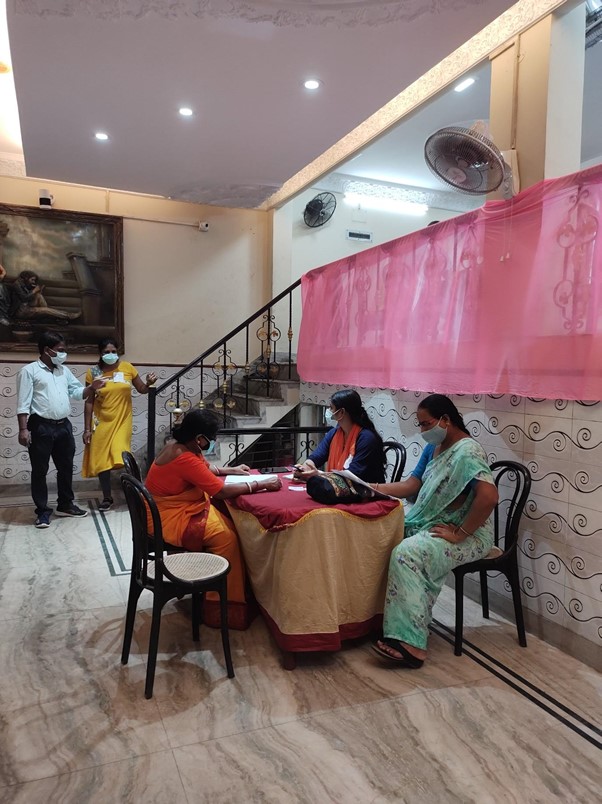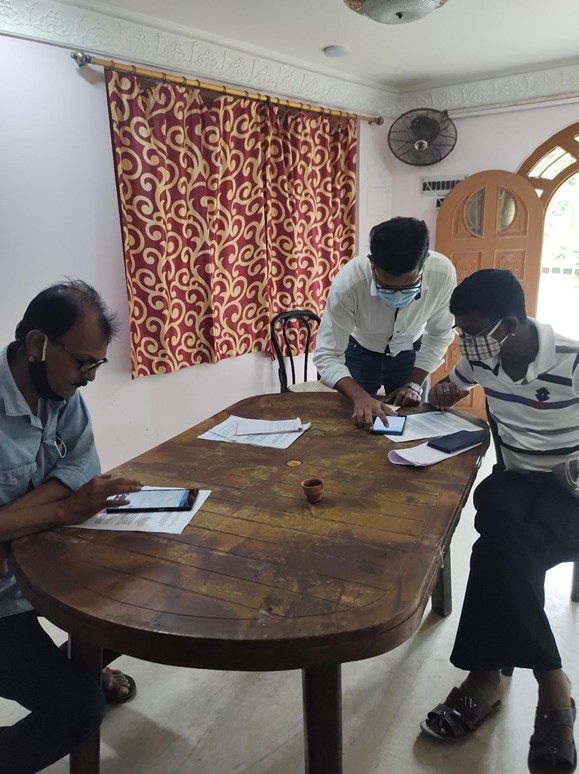Joint Accounts in the Fintech Era: How Does Labelling, Transparency and Approval Rules Affect Spousal Financial Decision Making?
Blog Published October 2021 by the Think Forward Initiative
Social science has consistently demonstrated the positive impacts of financial product individualization for female empowerment (for recent example see Field et al., 2016). Reflecting this, the need to be financially independent is now a predominant message given to young adults from parents, peer groups and the media. Younger generations are now less likely to open, and less likely to put significant resources into, joint bank accounts when in long-term relationships.However, the underlying need for families and small groups to share and collectively manage resources for common purposes remains. Indeed, economic theory suggests that it is unlikely to be optimal to use separate accounts to save, allocate expenditure, and borrow for household public goods. And recent empirical findings are sparking a reconsideration. Recent findings suggest that there may be unintended negative consequences of private resources for women (Ashraf et al. 2014, Schaner, 2017) and that couples who pool their money in joint accounts are more likely to spend on utilitarian products than luxury goods (Gladstone et al., 2019).

This study revisits the topic of joint accounts and examines how their terms, increasingly varied due to innovations in the fintech sector, affect intrahousehold allocation decisions. Through an experimental lab setting in Kolkata, India, we examine the impact of labelling, transparency, and spousal approval on expenditure allocations of spouses. We also assess the impact of personally earning money on subsequent expenditure decisions of couples and specifically under different joint account terms.
Our focus on joint accounts will provide an important addition to the literature on how couples manage their finances. In our experiment, we explore how male and female spouses allocate money in account settings with increasing levels of ‘jointness’. The five main experimental arms include (i) private account, (ii) private account with resources labelled for common purposes, (iii) a visible joint account with no spousal approval necessary, (iv) a joint account where spousal approval is necessary and finally (v) a joint account where allocations are negotiated in person.
In addition, visible to their male spouses, half of our female participants will engage in half an hour of work in advance of allocation decisions in the lab, and the other half will not. This variation will allow us to isolate whether the origin of money (gift versus workfare) affects how it is allocated subsequently by spouses. Our findings will have important implications for ongoing discussions about universal income programs, and for the intersection of literature on labour force participation, gender pay gaps and financial product independence. We are specifically building on the behavioural economics concept of mental accounting, where Thaler (2008) suggested that earned money may be treated differently to unearned money.
 We have teamed up with IFMR-LEAD and two local microfinance organisations from Kolkata, India to conduct this lab experiment. In August 2021, we successfully piloted our participant recruitment process and our treatment arms. The pilot helped us understand the practical and logistical challenges that could feature in the main study. The data collected from the pilot also sought to refine the questionnaire, the enumerators’ training, and data quality.
We have teamed up with IFMR-LEAD and two local microfinance organisations from Kolkata, India to conduct this lab experiment. In August 2021, we successfully piloted our participant recruitment process and our treatment arms. The pilot helped us understand the practical and logistical challenges that could feature in the main study. The data collected from the pilot also sought to refine the questionnaire, the enumerators’ training, and data quality. The data from the pilot suggests that as hypothesized, (i) resources labelled as joint were more likely to be shared and allocated towards household public goods, that (ii) men and women allocated money earned by the female spouse to her account, and (iii) money received as transfers were more likely to be spent on personal consumption goods, whereas money received from workfare was more likely spent on necessities. After making additional improvements to the data collection process and survey questionnaire based on learnings from the pilot, the main experiment will be completed at the end of November 2021.
Urban India is an ideal place to study our research questions. Emerging economies are at the forefront of consumer-focused financial innovation and India is in the midst of a digital transformation in the use of smartphones for financial services. At the same time, with 52% of the women owned accounts inactive, despite impressive governmental efforts to open bank accounts for all Indians, the potential for joint accounts to improve household welfare and female empowerment in India remains. The lessons from this study will provide important insights for financial product innovation across the world.
References
Ashraf, N. (2009). Spousal control and intra-household decision making: An experimental study in the Philippines. American Economic Review, 99(4), 1245-77.
Ashraf, N., Field, E., & Lee, J. (2014). Household bargaining and excess fertility: an experimental study in Zambia. American Economic Review, 104(7), 2210-37.
Field, E., Pande, R., Rigol, N., Schaner, S., & Troyer Moore, C. (2021). On Her Own Account: How Strengthening Women's Financial Control Impacts Labor Supply and Gender Norms. American Economic Review, 111(7), 2342-75.
Garbinsky, E. N., & Gladstone, J. J. (2019). The consumption consequences of couples pooling finances. Journal of Consumer Psychology, 29(3), 353-369.
Schaner, S. (2015). Do opposites detract? Intrahousehold preference heterogeneity and inefficient strategic savings. American Economic Journal: Applied Economics, 7(2), 135-74.
Schaner, S. (2017). The cost of convenience? Transaction costs, bargaining power, and savings account use in Kenya. Journal of Human Resources, 52(4), 919-945.
Thaler, R. H. (2008). Mental accounting and consumer choice. Marketing Science, 27(1), 15-25.

